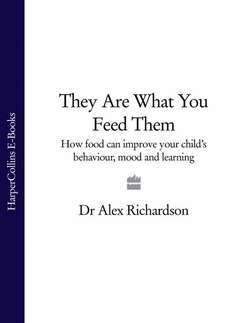Читать книгу They Are What You Feed Them: How Food Can Improve Your Child’s Behaviour, Mood and Learning - Dr Richardson Alex - Страница 43
Autism (ASD)
ОглавлениеAutism is the most severe form of what is now recognized as a range of ‘autistic spectrum disorders’ (ASDs). Features include restricted or absent social and interpersonal skills; a preference for repetition and routine; and interest in objects over people. ASD is much more common in boys than girls (perhaps not surprisingly, given that autism has even been characterized as simply an extreme of the archetypal ‘male’ brain!).
If your child is autistic, he will show poor social interaction—in fact, this learned skill may be absent altogether. He’ll try to avoid interacting through conversation or cuddles, and may be viewed as aloof, withdrawn and ‘living in a world of his own’. Autistic individuals generally find objects easier to deal with than people—probably because the behaviour of objects is much easier for them to anticipate. A small percentage of autistic children have islets of high functioning-to-genius abilities and are known as Autistic Savants, but as with all the conditions considered here, ASD can occur in children with any level of general ability. In those with normal or high ability, areas of strength may include computing, engineering and any occupations where good ‘people skills’ are not essential.
The number of children diagnosed with ASD has increased dramatically in recent years. For example, in Scottish schools, diagnoses nearly trebled between 1998 and 2005. In the US, autism diagnoses in school-aged children rose from 5,400 in 1991-2 to a massive 97,800 in 2000-2001. Better recognition and diagnosis may account for some of this increase, but cannot explain it all away. Something else is going on. As I’ve emphasized, the autism label is purely descriptive, so looking for any single ‘cause’ is likely to be fruitless. The real causes are likely to be multiple, highly complex, and will vary between different children. In my view, the simplest broad-brush explanation is the combination of two things: on the one hand, increasing exposure to potential toxins (from synthetic chemicals, heavy metals and other environmental contaminants), and on the other, decreasing intake of many essential nutrients needed to ‘defuse’ and get rid of those toxins. For genetic reasons, some children may have less efficient ‘detoxification’ systems, and/or metabolic inefficiencies that increase their need for certain nutrients. It is interesting that the earliest reports of autism show that it was regarded as a metabolic disorder, and special diets were often recommended. (See the Resources chapter for some excellent books on this subject.)
